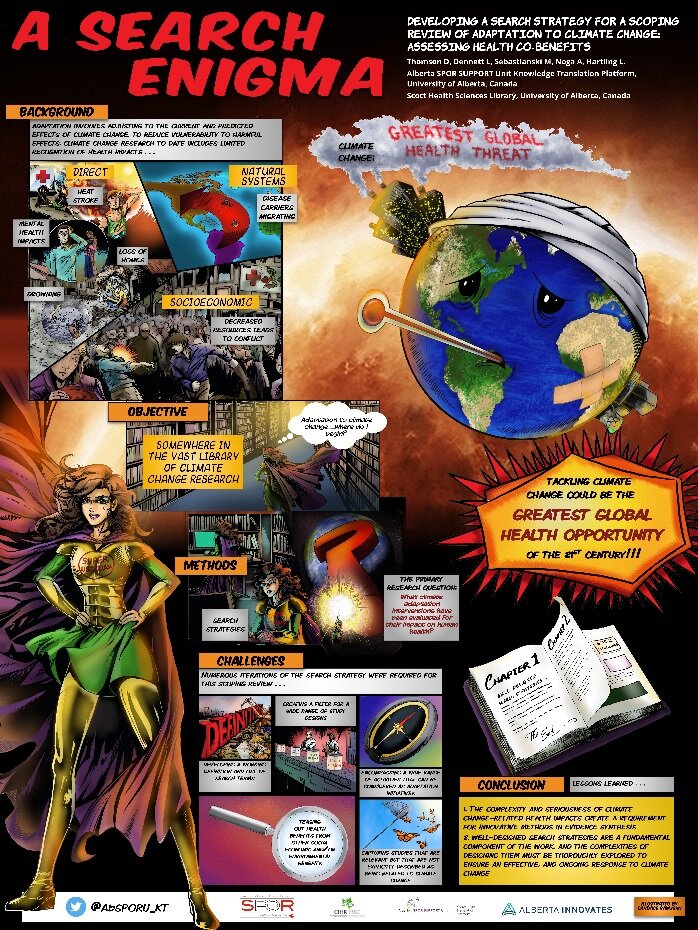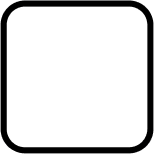Main Menu

Ten years ago, Cell Press started a trend when they introduced the requirement that a graphical abstract be included with any publication submission. The graphical abstract was simply a single panel image that summarized the results of the research and allowed the reader to understand the take-home message of the paper quickly, even if it did not fall within their discipline. This decision was driven by the fact that online communication was rapidly replacing print. Graphical representations of abstracts were a way for the journal to inform its readers in an online-friendly format.
Since then, the demand that researchers find visually innovative methods of communicating their findings to colleagues has grown drastically. Take for example the lowly academic poster with its long-winded sentences, endless graphs, and tables of tiny unreadable font. The truth is, reading academic posters involves a lot of mental effort and squinting. There is, however, a growing movement to change the format of academic posters so that they become effective tools for communicating research findings.
Last summer, the Alberta SPOR SUPPORT Unit Learning Health System team (formerly called the Alberta SPOR SUPPORT Unit Knowledge Translation Platform or AbSPORU KT Platform) decided it was time to experiment with some innovative academic poster designs. This decision was inspired by the addition of a graphic artist to the AbSPORU team. In this blog post, we highlight two posters she helped to create, and discuss some of the benefits and challenges of building graphic posters to communicate with the academic community. Below are some of the reflections offered by AbSPORU staff who worked on graphic posters.
Process & Reflections: We developed this poster for the 2019 Global Implementation Conference in Glasgow, Scotland. Those who saw the poster were very impressed, and it made for an easy conversation starter. We found it much easier to get the message across to attendees with the aid of the visuals and the story.
Still, developing a poster is normally a solitary process. Here, it became an interdisciplinary team project that involved someone that was not a content expert, but a creative expert. Our KT researcher staff and artist worked together from the very beginning. Including the artist early on was essential to developing a concept that would resonate with the audience. However, we learned that it is helpful for researchers to prepare some concrete story ideas to bring to the initial meeting, as artists may or may not have content expertise. This is especially important if you’re looking to graphically represent complex processes or concepts, or topics that include a lot of jargon.
To complete the storyboard, we needed to start planning months ahead of time, rather than the typical one-week prior to the conference, as we needed several face-to-face meetings. Multiple iterations of the storyboard were needed to establish an appropriate story concept (the traveler and guide), graphics, and text. We all had to compromise on details, both visual and textual, in order to create an effective and balanced piece of visual communication.
An important step for KT researchers specifically is to ensure that you and your artist are on the same page about the purpose of the graphic representation. If your purpose is to deliver an evidence-based message, the artist must know that the integrity of the message must be maintained without room for the level of interpretation that art normally accommodates. By having a conversation early on about the importance of evidence and articulating the specific message you want to deliver, you will save time in avoiding unnecessary iterations of your poster.
This conversation will also help align expectations of the different team members, another important consideration for KT researchers. Artists may not be used to the level of critique and revisions required for research activities. Conversely, researchers may not but used to appreciate the time and resources required by artists to accommodate multiple rounds of revisions. Being very clear about the purpose of the poster and developing the story fully in early meetings, rather than iteratively over time, can help prevent frustration and fatigue that comes with each additional round of revisions.
Process & Reflections: We developed this poster primarily for the 2019 Cochrane Colloquium in Santiago, Chile. One of the advantages of this comic style was that we could deconstruct the poster into individual panels and make them into slides for oral presentations. Again the feedback on this poster has been positive and presentation slides using the individual panels garner audience engagement in oral presentations.
Developing this poster was a fun and very enriching experience that resulted in a strikingly beautiful poster. KT researchers interested in this style should consider the same challenges presented in storyboard example. However, we do caution researchers to consider the cost of this graphic style. This poster was far more labor-intensive for our graphic artist because of the degree and intricacy of the graphics. With an in-house visual practitioner, this was a feasible option for the AbSPORU KT Platform, but perhaps not for an independent investigator hiring an external artist.
We considered a number of different graphic styles and landed on our superhero metaphor. Our poster described a process, and the data was purely observational but this same style may not work as well for hard or quantitative data. We suggest that KT researchers discuss different possibilities with the artist before deciding on style as the type of data that needs to be presented will dictate what style is most appropriate.
Although it involves thoughtful planning and dedicated collaboration, creating a graphic academic poster is a powerful way to present your research. Visual formats are eye-catching, and messages delivered through graphics are easier for the audience to navigate and remember. If you are thinking about embarking on creating a graphic academic poster and need advice, KT Alberta and the AbSPORU KT Platform can help. Contact stephaniebrooks@ualberta.ca with specific questions and she can point you to the right person. Also, Alberta has several visual practitioners that can provide you with creative expertise.
Let us know how you want to stay connected


 News + Events
News + Events

 Patient Partner Research Opportunities
Patient Partner Research Opportunities

 I agree to receive occasional emails from AbSPORU.
I agree to receive occasional emails from AbSPORU.University of Calgary Foothills Campus
3330 Hospital Dr NW
Calgary, AB T2N 4N1
College Plaza
1702, 8215 112 St NW
Edmonton, AB T6G 2C8
The Alberta SPOR SUPPORT Unit operates on and acknowledges the lands that are the traditional and ancestral territory of many peoples, presently subject to Treaties 6, 7, and 8. Namely: the Blackfoot Confederacy – Kainai, Piikani, and Siksika – the Cree, Dene, Saulteaux, Nakota Sioux, Stoney Nakoda, and the Tsuu T’ina Nation and the Métis People of Alberta. This includes the Métis Settlements and the Métis Nation of Alberta. We acknowledge the many First Nations, Métis and Inuit who have lived in and cared for these lands for generations. We make this acknowledgment as a reaffirmation of our shared commitment towards reconciliation, and as part of AbSPORU’s mandate towards fostering health system transformation.
© 2024 AbSPORU